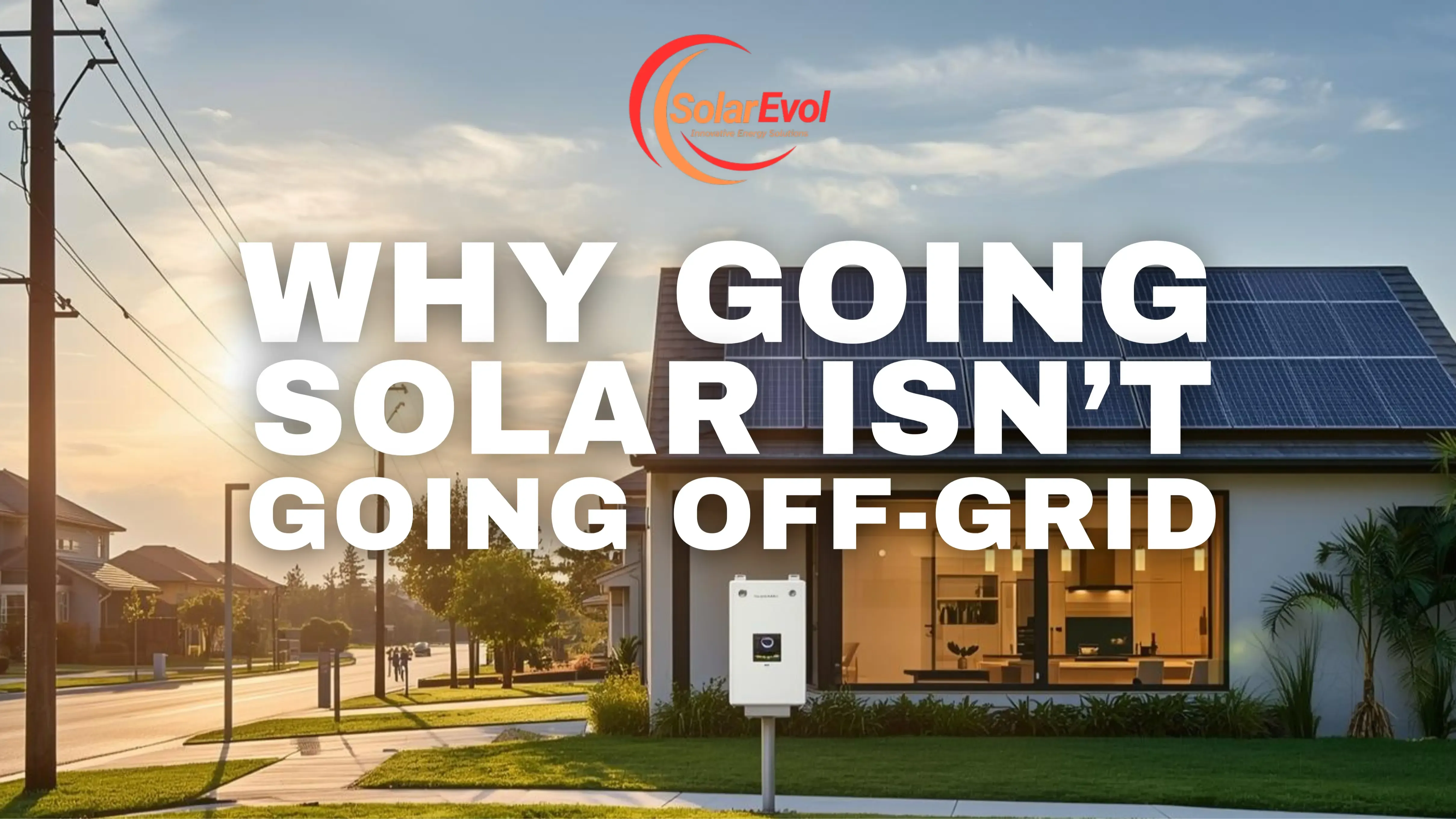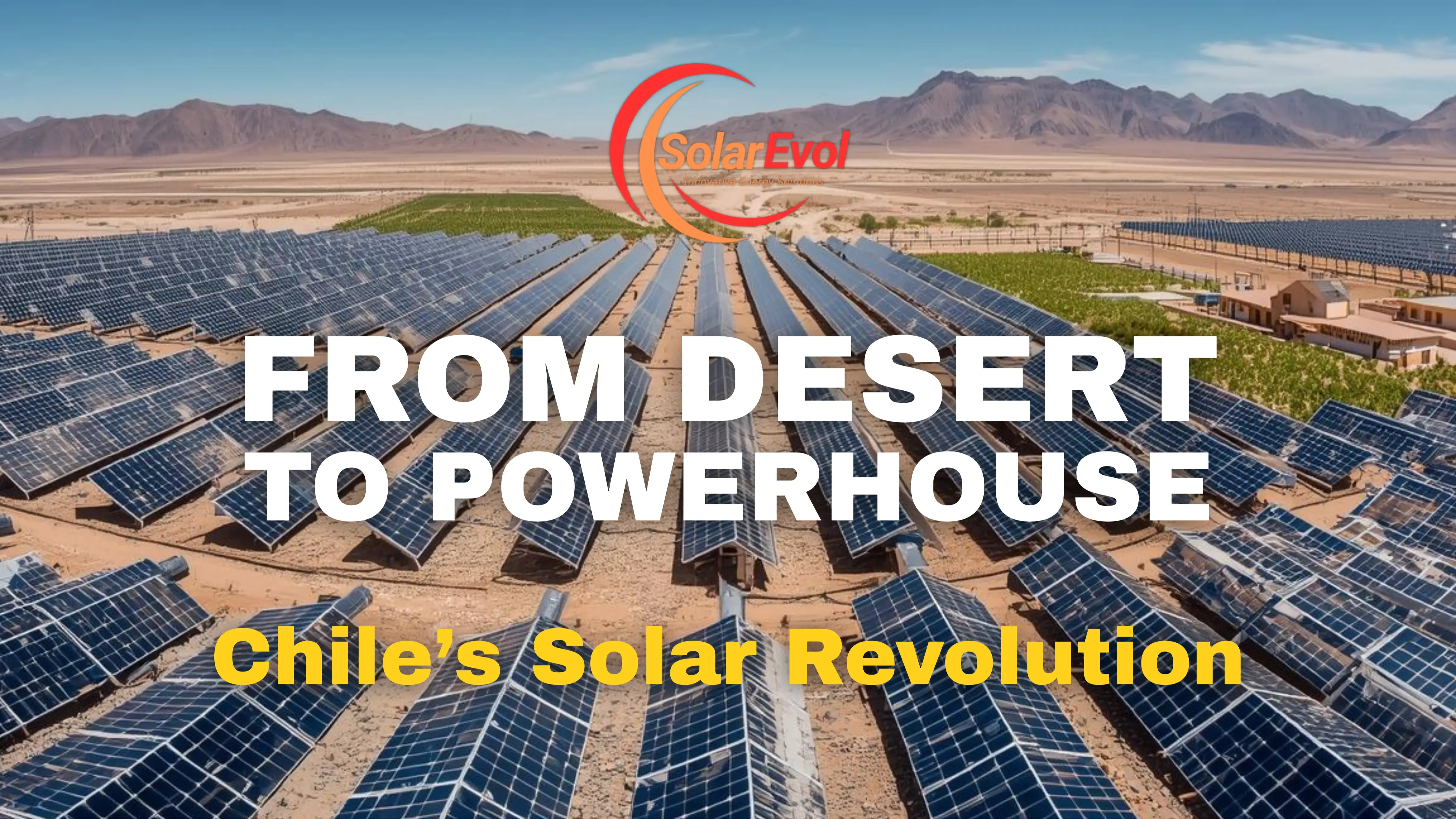
How Solar Evolves With Technology
Jul 23, 2025Friday, July 18, 2025
You wouldn’t try to run today’s apps on a flip phone.
You wouldn’t expect a 2012 EV to outperform a new model.
So why are some solar systems still being designed like it’s 2015?
Here’s the reality: Solar has evolved — fast. Panels are smarter. Inverters are more efficient. Monitoring is sharper. And battery storage? A whole new frontier. If you're not keeping pace with the tech curve, you're not just leaving savings on the table — you're installing a system that’s already outdated.
At Solar Evol, we live at the edge of this evolution. This white paper breaks down how technology is transforming solar — and how we help our clients stay ahead of the curve without getting buried in jargon or locked into yesterday’s gear.
Let’s take a look under the hood.
🔧 Solar Tech Is Evolving — Here’s What That Really Means
This isn’t just about flashier panels or slicker apps. It’s about fundamental performance gains, smarter system control, and greater energy independence.
Here’s how the tech is moving — and how we evolve with it.
- Panel Efficiency Isn’t Just Marketing — It’s a Design Multiplier
Solar panels today can hit 22%+ efficiency, up from 16–18% just a few years ago. That means more power from fewer panels, tighter footprints, and better fits for smaller or awkward rooftops.
🧠 Insider Tip: Look for panels using N-type cells (like TOPCon or HJT). They degrade slower, perform better in heat, and are ideal for future-proof systems.
💡 How Solar Evol adapts: We use a tiered module selection strategy — balancing efficiency, warranty, and long-term cost per kWh. We don’t just spec the "most popular" panel. We spec the right panel.
- Inverter Tech Has Quietly Leveled Up
Today’s inverters do more than convert DC to AC — they’re mini energy brains. Features like rapid shutdown, real-time optimization, and smart-grid communication now come standard (or should).
⚠️ Common Pitfall: Cheap string inverters with no module-level control = shading issues and blind spots in performance.
💡 How Solar Evol adapts: For complex rooftops or partial shading, we go with microinverters or DC optimizers. For battery-ready homes, we spec hybrid inverters that can evolve as your energy needs grow.
- Storage Is No Longer Optional — It’s Strategic
Battery prices have dropped significantly, and new incentive programs (hello, IRA tax credits + local rebates) make solar + storage more attractive than ever. The bonus? Storage shifts your energy use from reactive to resilient.
🔋 Pro Move: Use storage not just for backup, but for load shifting and demand charge management — especially in states with time-of-use rates.
💡 How Solar Evol adapts: We don’t just bolt on batteries. We design around usage patterns, rate structures, and backup priorities. And we always build with future expandability in mind.
- Software + Data = Smarter Energy, Not Just Solar
You can now see real-time production, consumption, grid interaction, and battery levels in a single interface. But the bigger story? Predictive analytics. Systems can now identify inefficiencies, forecast loads, and alert users before something fails.
📊 Pro Insight: A solar system without monitoring is a black box. You won’t notice underperformance until your electric bill says so.
💡 How Solar Evol adapts: Every install includes production + consumption monitoring, with alert systems and custom reporting. For commercial clients, we offer dashboard integration for ESG tracking or LEED compliance.
- Installation Hardware Is Smarter (and More Beautiful)
Solar used to mean bulky racks and visible conduit. Not anymore. Today’s mounting systems are lower-profile, color-matched, and compatible with a range of roofing materials — reducing installation time and improving aesthetics.
✨ What the pros know: Faster installs don’t just save labor — they reduce roof impact and minimize long-term leak risks.
💡 How Solar Evol adapts: We pre-plan rafter layouts, use flashing-integrated mounts, and match racking systems to both the panel and roof type for optimal performance and clean finishes.
🧭 What You Should Do Differently in 2025
Don’t assume the system you saw installed on your neighbor’s roof last year is still best-in-class. If you're designing a solar system now, make sure you’re planning for what your building will need and use in the next 5–25 years — not just what looks good on paper today.
Here’s how to future-proof your system:
✅ Choose panels with low degradation rates and long warranties (25+ years)
✅ Design around time-of-use rates and battery incentives
✅ Integrate consumption monitoring, not just production
✅ Use scalable inverter and storage platforms
✅ Design for serviceability and smart controls
✅ Avoid lowest-bid hardware that can’t grow with you
Technology isn’t static, and neither is solar. A future-ready system is one that’s designed for change: changing utility rates, changing usage patterns, changing expectations around climate resilience and energy independence.
Stay connected with news and updates!
Join our mailing list to receive the latest news and updates from our team.
Don't worry, your information will not be shared.
We hate SPAM. We will never sell your information, for any reason.












